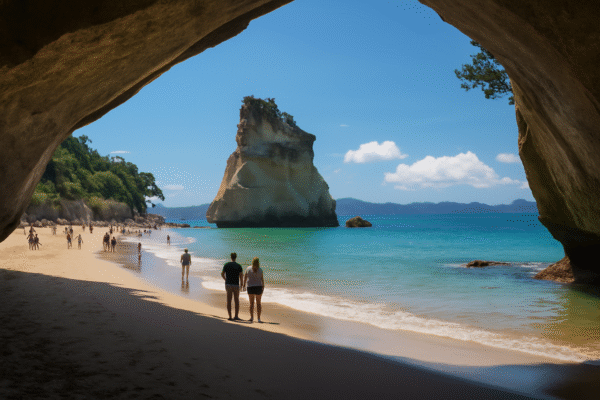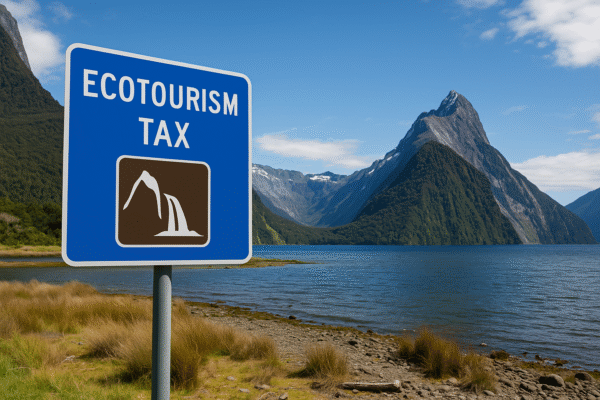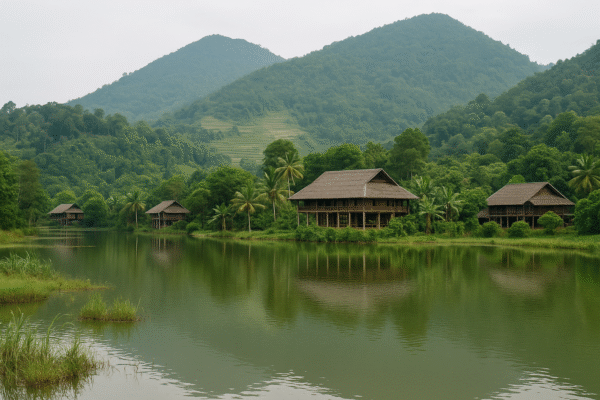In a strategic move to safeguard its pristine natural heritage, the New Zealand government has announced plans to implement entry fees for international visitors at some of its most iconic nature destinations starting in 2027. This initiative, aimed at promoting sustainable tourism and reducing the environmental strain caused by high visitor numbers, marks a pivotal shift in the country’s approach to conservation.
According to the Ministry of Business, Innovation and Employment (MBIE), the new charges—expected to range between NZD $20 to $40 (AUD $12 to $24)—will apply to high-traffic natural attractions including Cathedral Cove (Te Whanganui-a-Hei), Milford Track, Aoraki Mount Cook, and Tongariro Alpine Crossing. The revenue generated, estimated at NZD $62 million annually, will be reinvested in conservation efforts, trail maintenance, visitor infrastructure upgrades, and biodiversity protection.
🌿 Why New Zealand Is Charging Tourists to Access Natural Sites
New Zealand welcomed over 3.8 million international visitors in 2024, and that number continues to grow. While tourism is a vital economic contributor—accounting for nearly 6% of GDP—it has also placed increasing pressure on the country’s fragile ecosystems and limited conservation budget.
Data from New Zealand’s Department of Conservation (DOC) indicates that international tourists account for around 80% of the foot traffic at key conservation sites. Overcrowding, erosion, and waste accumulation have raised red flags about long-term sustainability.
By implementing visitor levies, New Zealand seeks to protect its treasured landscapes while still offering a world-class nature-based tourism experience. It’s part of a broader movement to shift toward high-value, low-impact tourism.
🗺️ Entry Fees Targeting Key Attractions
The new conservation levy will apply to some of New Zealand’s most cherished locations, including:
- 🪨 Cathedral Cove (Te Whanganui-a-Hei Marine Reserve): Famed for its limestone archways, turquoise waters, and popularity among filmmakers, this coastal gem faces seasonal overcrowding and trail degradation.
- 🥾 Milford Track: Often described as one of the world’s greatest walks, this 53.5-km trail in Fiordland National Park attracts hikers from around the globe, many of whom are unaware of the environmental toll.
- 🏔️ Aoraki Mount Cook: Home to New Zealand’s tallest peak, the area sees significant pressure from climbers, stargazers, and adventure seekers, necessitating enhanced infrastructure and waste management.
- 🌋 Tongariro Alpine Crossing: Located in Tongariro National Park, this volcanic hiking route has cultural, ecological, and geological significance and is frequently impacted by litter and trail erosion.
💚 A Step Toward Responsible and Regenerative Tourism
Rather than discouraging tourism, New Zealand’s approach seeks to enhance the quality of the visitor experience by ensuring natural areas are well-preserved and visitor-ready. The fees collected will support:
- Trail restoration and maintenance
- Improved sanitation and waste systems
- Biodiversity conservation and native species protection
- Local employment in conservation and tourism services
This initiative also complements New Zealand’s Tourism Strategy 2025–2030, which promotes eco-tourism, cultural tourism, and the attraction of high-value travelers who prioritize sustainability and community engagement.
⚖️ Conservation vs. Commercialization: A Balancing Act
While the move has garnered support from conservation groups and sustainable travel advocates, it has also sparked debate. Organizations like Forest & Bird caution against potential over-commercialization of public lands, warning that increased business involvement in conservation areas could blur the line between protection and profit.
Still, government officials stress that reforming conservation laws will provide more flexibility for tourism operators, especially those contributing to environmental preservation and regional development. This legislative overhaul could also unlock greater access to funding, partnerships, and innovation in nature management.
📈 Economic Benefits for Local Communities
The tourism levy is not just about conservation—it’s also a tool for economic empowerment. Communities surrounding these popular sites, many of them in rural or remote areas, stand to benefit from increased employment opportunities in sectors like:
- Eco-guiding and cultural tourism
- Hospitality and transport
- Trail maintenance and environmental education
- Artisan crafts and local cuisine
By encouraging responsible tourism, New Zealand can ensure that visitor spending trickles down to local families, while reducing the risks of environmental degradation.
🌍 Global Benchmark in Sustainable Travel
New Zealand’s approach places it among a growing number of destinations—such as Bhutan, Iceland, and parts of Italy—leading the way in charging tourist levies to fund conservation. These countries are reshaping tourism models to align with climate resilience, cultural respect, and long-term ecological health.
📌 Conclusion: A Model for the Future of Travel
New Zealand’s 2027 plan to introduce entry fees for international visitors at its most visited natural landmarks signals a paradigm shift in sustainable travel management. By balancing tourism growth with environmental stewardship, the country offers a blueprint for how to protect natural wonders in the age of mass tourism.
As global travelers increasingly seek out destinations that align with their environmental values, New Zealand stands ready to welcome them—on the condition that they contribute to preserving the landscapes they come to admire.
For more travel news like this, keep reading Global Travel Wire






















